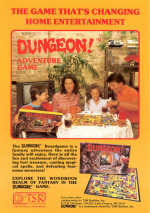I think the thing that makes it hard for people to appreciate these days is how much rumor was involved and how much of it was due to this being a new game that, to outsiders, seemed to blur reality and fantasy. Also there were a lot of mainstream experts and shows giving credence to it (so it wasn't just the 700 club, this stuff was on ABC). And it was a blend of a religious and psychological and legal panic. There were a lot of things, that I think were coming on the heels of some of the cultural chaos of the 60s and 70s, that made a scape goat like music or gaming very appealing (I don't know if people remember how many adults were traumatized vets in the early 80s, but I sure do, and I think stuff like that, also had a major influence: had a lot of friends parents in recovery for example). What I recall is my mother was fearful from a religious point of view, because we were very religious, but also from the point of view of worrying about me getting into drugs or losing my hold on reality (she had heard from a friend, who claimed her friends kid was killed because he played D&D and took PCP and they acted in the woods or the sewers---can't recall precise details: I think this was just a wives tale that spread from stuff like the story in the OP). Now we know how much of this was fantasy, how much was based on reality. At the time, if you were a mom or dad worried about your child's wellbeing, it was a lot less clear (moral panics tend to be like that when you live through them).




